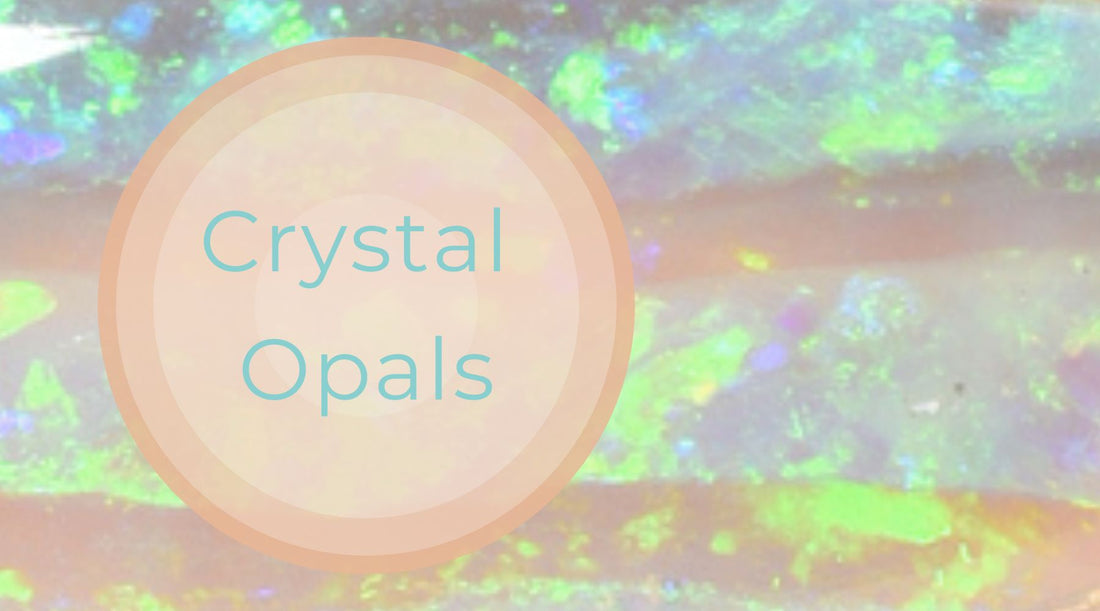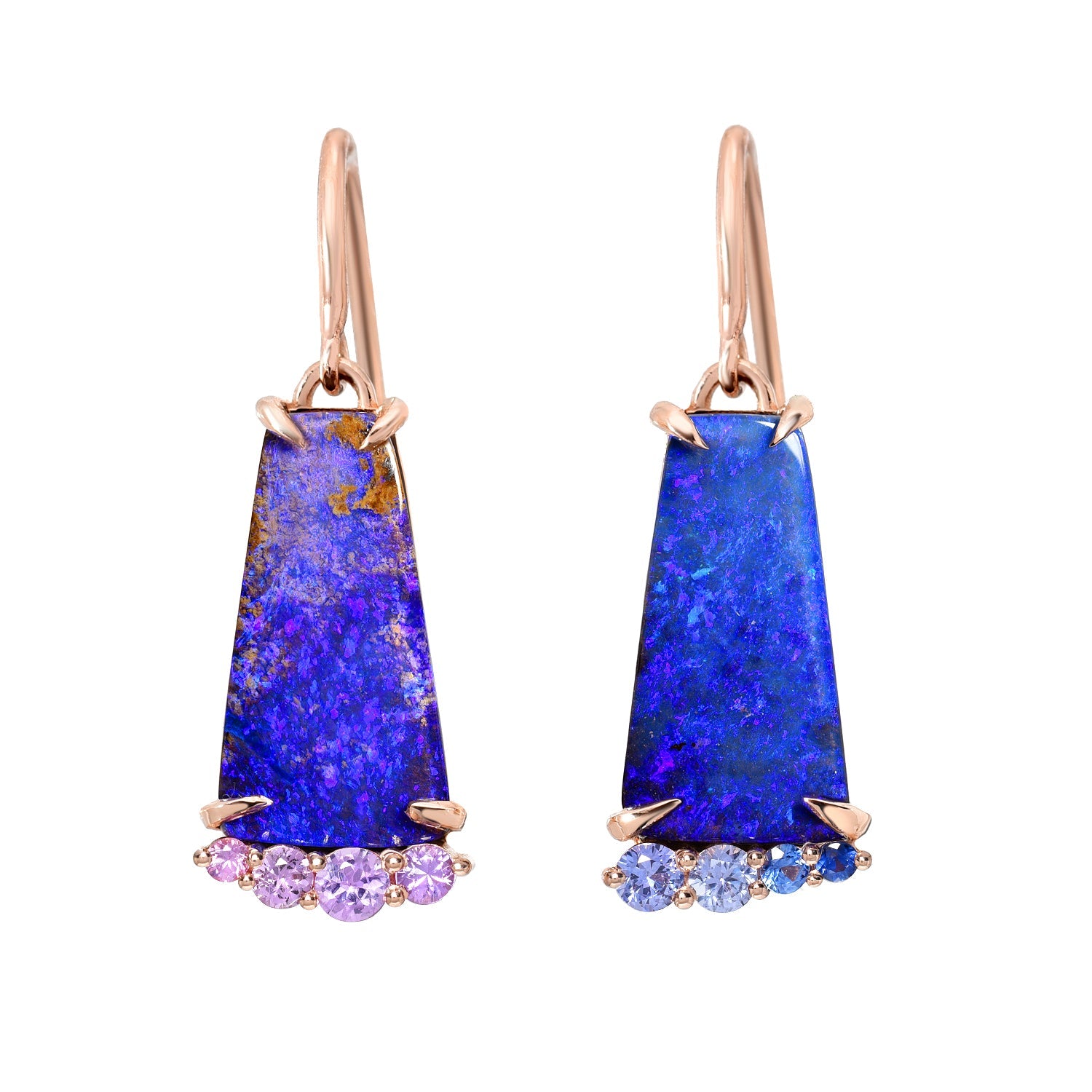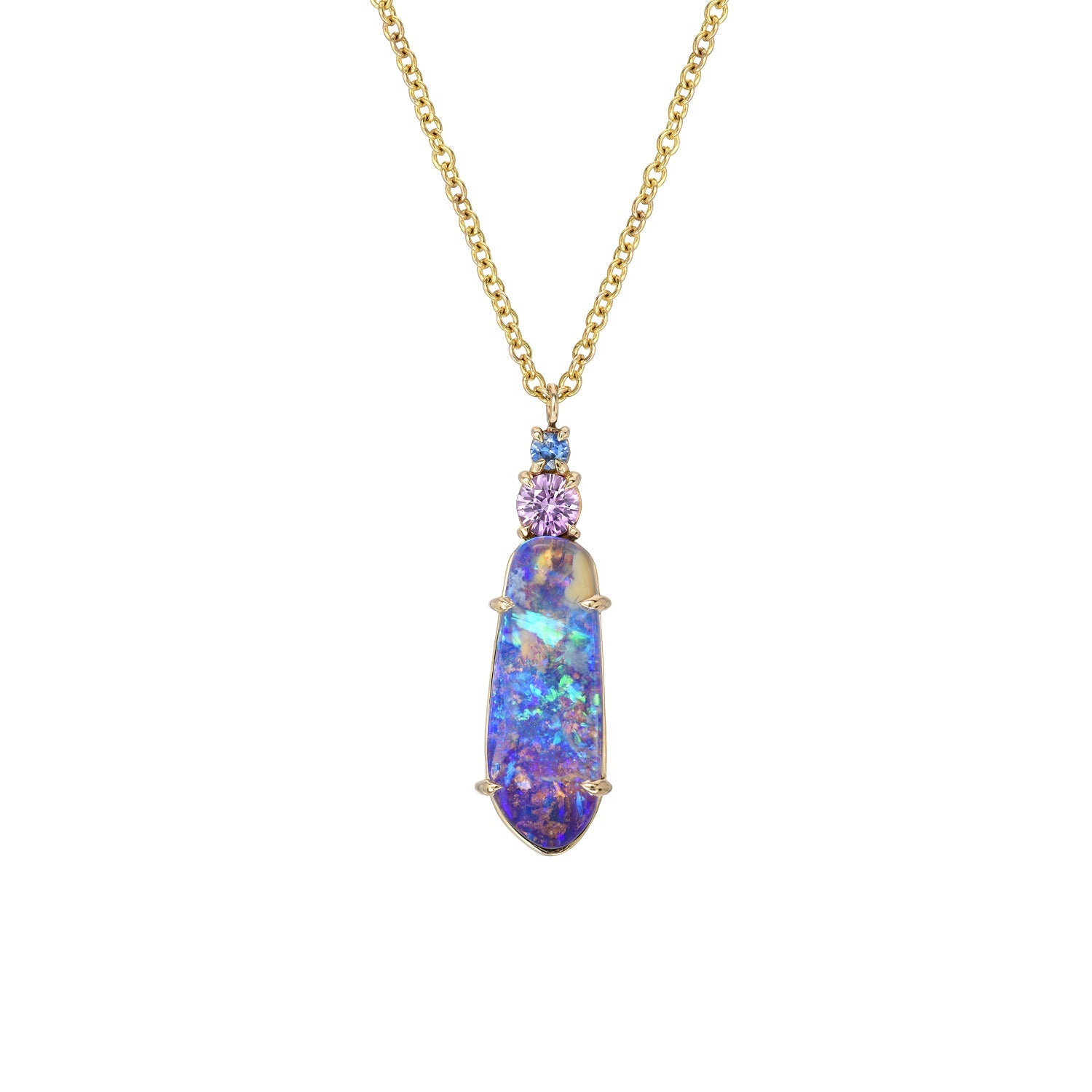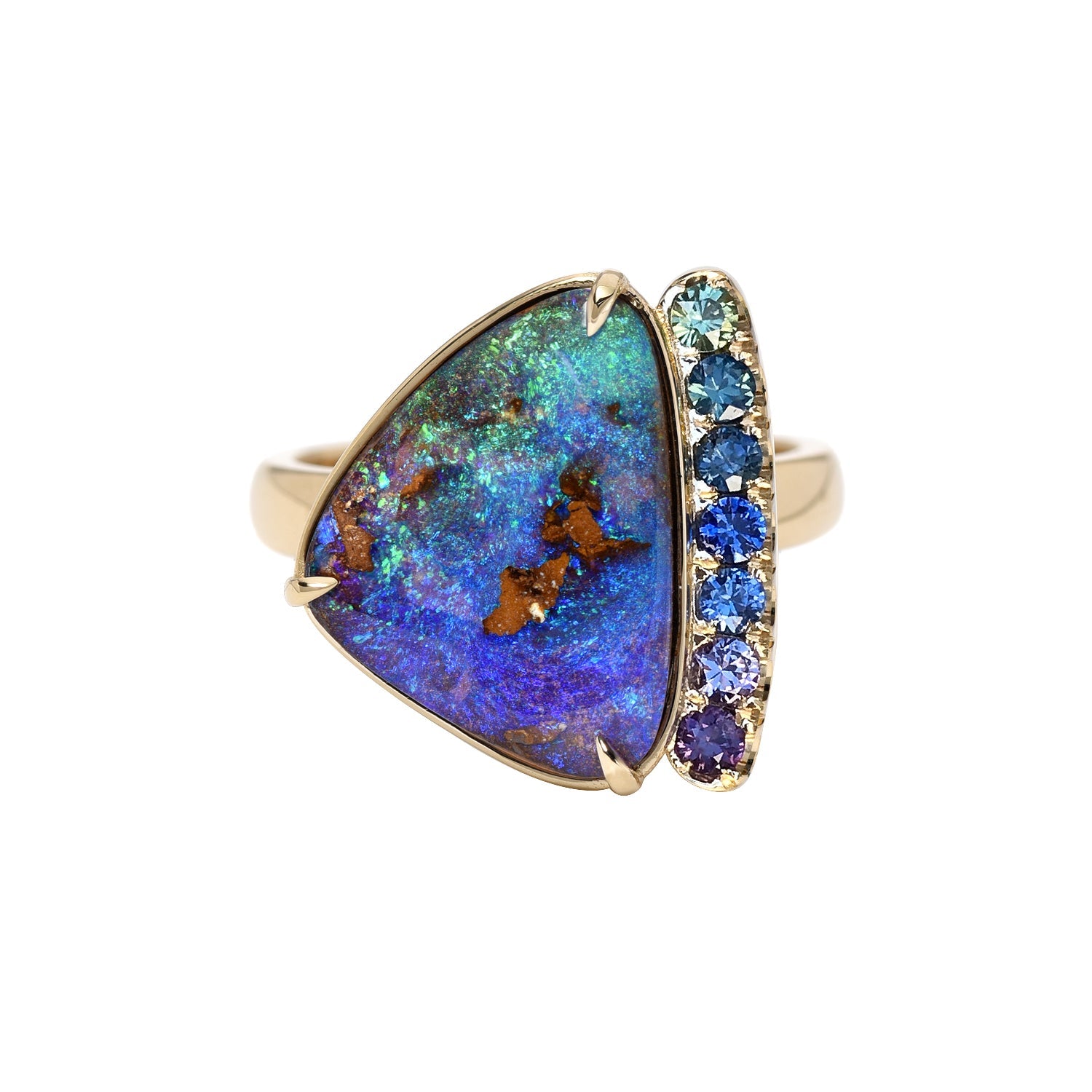
Crystal Opals --- What are they, and what to look for
luis gomezShare
Buying Opals can sometimes feel daunting. To the casual or inexperienced buyer, the exercise might seem convoluted, a bit jargon heavy, and most importantly full of geologically-laden issues regarding the value and origin of the gemstone. A quite prevalent term one is likely to stumble upon while making an Opal purchase is “Crystal Opals.” In this article we’re going to answer some of the most searched questions on Google regarding this branch of the Opal family. Questions like, what are crystal Opals? Are crystal Opals real or artificial? Where are crystal Opals mined? And, finally, what is the value of crystal Opal?
What are crystal Opals?
Crystal Opal, the term, refers to any type of Opal - black, semi-black, white, etc - which has a transparent or somewhat translucent appearance. In the world of Opals, among geologists, miners, and jewelers, this quality, this ephemeral characteristic, is oftentimes called “the diaphaneity of the stone.” Opals of this type are a jewelers dream and are considered premium gemstones for the confection of rings, bracelets, earrings, necklaces and other types of ornamentation. Why? Because crystal Opals can in fact reflect a vast kaleidoscope of colors — a breathtaking spectrum that exceeds most other stones, a dance of light just beyond the grasp of more opaque Opals.
The translucent nature of crystal Opals gives them a famed clarity, both dynamic and vibrant, particularly when they come in contact with light. Though beautiful in their own right, this crystalline quality of crystal Opals is one that opaque stones lack.
How can you identify a crystal Opal?
The best, and to a degree the easiest way of identifying whether you’re in the presence of a crystal Opal is to test its body tone against a good light source. Hold the Opal up to the light - if the stone appears milky or slightly opaque, it’s probably a white Opal or some other form of non-crystal Opal. However, if enough lumens pass through the gemstone, or if you can see clearly through the gem, then you are most likely holding a crystal Opal.
Why do we say most likely?
Because, the gemstone market bears an abundance of well crafted synthetic Opals (lab grown but comprised of the same components as natural Opal), man-made stones (made with natural Opal parts, but not naturally grown), and outright counterfeits (not real Opal material presented as such). Artificial Opals are sometimes passed off as authentic and sold at staggering prices. That’s why it is important to understand how Opals are valued, what characteristics to look for when buying one, and why their origin is important. In the latter’s case, most quality Opals come from Australia - over 95% of them. Australian mining, due to rather strict government oversight, is one of the most supervised gemstone markets on the planet. These gemstones are typically classified (many lean on AOEA - Australian Opal Ebusiness Association - Standards) and credible suppliers are usually happy to address inquiries about stone type, origin or authenticity.
Nonetheless, there are certain parts of the world where the market is less controlled. Where unscrupulous dealers trade in counterfeit crystal Opal, or use tanning practices to smoke an Opals color so its background hue is darker. While there is nothing wrong with selling synthetic, man-made Opals or treated Opals disclosed as such, it is unethical to pass them off to unsuspecting Clients as natural Opals.
Are crystal Opals real?
Simply put, yes. That said, there is a segment of the market that deals in synthetic Opals. These types of gemstones were first created by Pierre Gilson in 1974, and continue to be marketed today under names like Monarch Opal, Monet Opal, Galaxy Opal, Exodus Opal and Sterling Opal. The key criterion for synthetic Opal is that its composition must match that of a natural Opal; only it’s created in a laboratory environment, rather than in nature, by millions of years of the perfect set of environmental conditions. Some additional terms used to refer to these simulant Opals are Lab Opal and Cultured Opal. These types of Opals aren’t always easily distinguished from precious opals.
Although most fine Opal jewelry is crafted using natural Opals, lab created Opal use is also considered acceptable in the jewelry trade, as long as its application is transparent. It is imperative that potential buyers understand what they are investing in.
Unless a dealer indicates otherwise, most crystal Opals are real — that means they are not synthetic or artificial but mined and are the product of millions of years of geological pressure and tectonic activity.
Nonetheless, it is important to comprehend how to tell if the crystal Opal you’re about to invest in is real or artificial.
How can you tell if a crystal Opal is real?
We’ve already addressed the transparency test with light. But there’s something else to remember about natural Opals. The most striking feature of real Opals is that most natural Opals will display irregularities. They may show a bumpy or curved topographical surface, following the seam of precious Opal in the host rock (as in Boulder Opals). Some have markings or have been damaged during excavation, while others may exhibit various types of inclusions, such as in this crystal Opal necklace.

Often, artificial Opals lack these characteristics -- synthetic stones may look too perfect and geometrically exact. However, lab mimicry has become increasingly adept, with a multitude of simulant Opals echoing the random veining and irregular color patterns of natural Opals, so it can sometimes be hard to tell - particularly for a novice. If ever unsure, seeking the expertise of a gemologist or knowledgeable jeweler may prove helpful.
In addition to synthetic Opal, man-made Opal exists in the form of Opal doublets and Opal triplets. In the case of a doublet, there is a thin layer of real, natural precious Opal, adhered to a backing of potch (non-precious or common Opal). A triplet has the same composition, with an additional “triplet” layer of clear convex material atop the Opal layer. In either case, these layers of glued Opal are constructed, rather than naturally formed as a single unit. An easy way to identify doublets and triplets is in profile; they have clean, linear seams where the layers connect. They are also fairly easy to distinguish from crystal Opals because their darker potch backgrounds tend to occlude any transparency - a key feature of crystal Opals.
Are Opals a type of crystal?
Crystal Opals or any Opals for that matter are not Crystals — we just use that term, that nomenclature, in order to classify and brand a type of Opal.
Opals are amorphous silica rocks that are not really minerals but a type of mineraloid. One of the defining aspects of minerals is that they will form crystals; however not all crystals are minerals. Opals, due to how they are formed, lack this crystal structure despite what you might think when gazing at a spectacular crystal Opal specimen.
Are crystal Opals expensive?
In order to audit the potential monetary value of an Opal there are multiple variables that have to be considered. It’s color, background hue, origin, pattern and dozens of other key factors that ultimately give a value to the stone. It should be noted, nonetheless, that crystal Opals of the highest quality may fetch over $2000 per carat. A crystal Opal may demand more than a gemstone with a similar body type but without that translucent quality to it — the more translucent, the greater the degree of diaphaneity of the crystal Opal, the greater the price it can command.
Where do crystal Opals come from?

Considering 95% of Opals are mined in Australia, it comes as no surprise that the vast majority of the world’s crystal Opals hail from the same. More specifically, they are frequently mined in southern Australia, near the iconic Lightning Ridge area as well as White Cliffs and other parts of New South Wales. These are incredibly popular mining communities and are supervised by the government.
Here at NIXIN Jewelry, crystal Opals are one of our favorite types of Opals to work with. We invite you to explore our array of Opal pieces and get lost in their kaleidoscope of colors.



